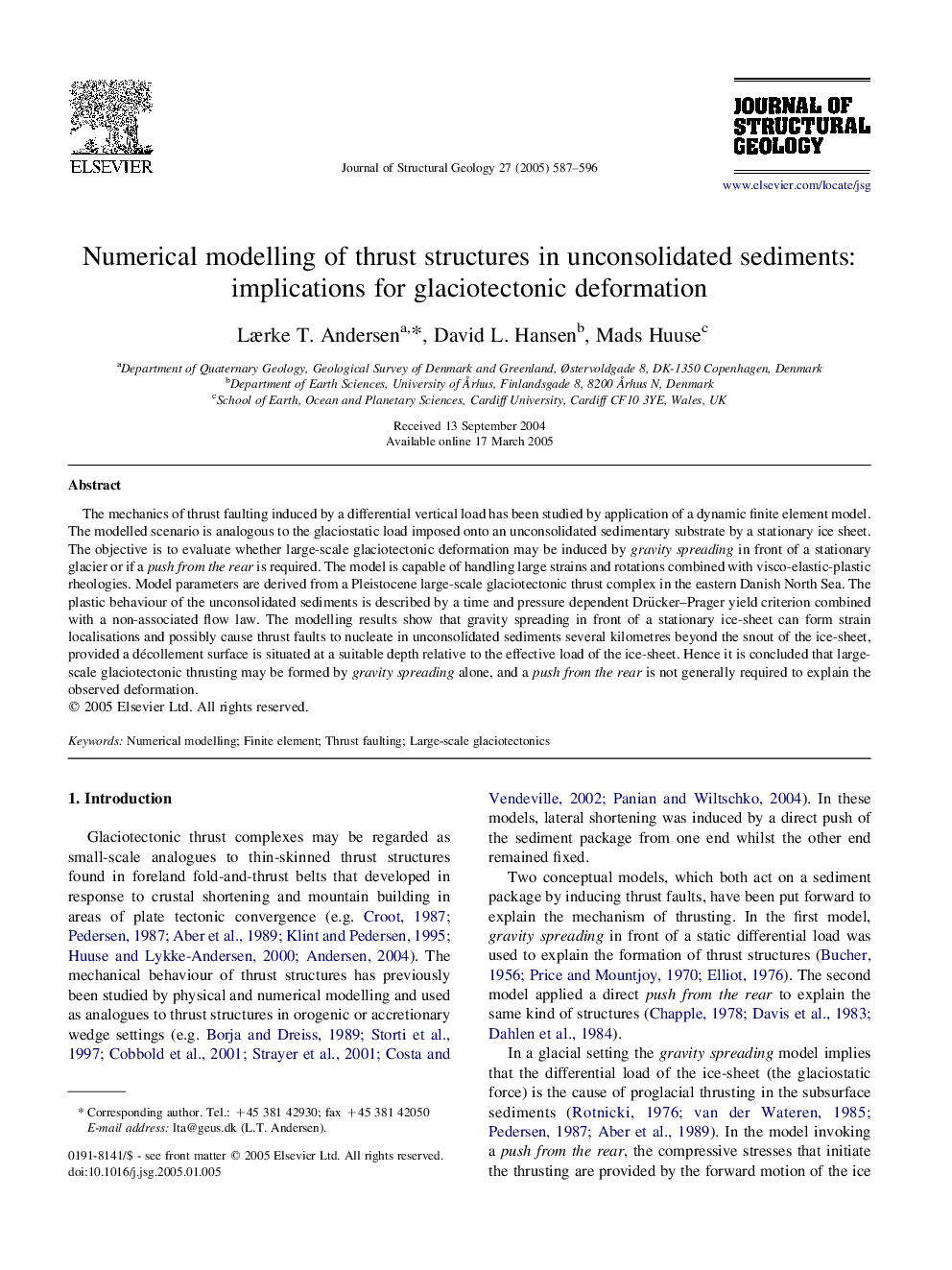| Article ID | Journal | Published Year | Pages | File Type |
|---|---|---|---|---|
| 9536301 | Journal of Structural Geology | 2005 | 10 Pages |
Abstract
The mechanics of thrust faulting induced by a differential vertical load has been studied by application of a dynamic finite element model. The modelled scenario is analogous to the glaciostatic load imposed onto an unconsolidated sedimentary substrate by a stationary ice sheet. The objective is to evaluate whether large-scale glaciotectonic deformation may be induced by gravity spreading in front of a stationary glacier or if a push from the rear is required. The model is capable of handling large strains and rotations combined with visco-elastic-plastic rheologies. Model parameters are derived from a Pleistocene large-scale glaciotectonic thrust complex in the eastern Danish North Sea. The plastic behaviour of the unconsolidated sediments is described by a time and pressure dependent Drücker-Prager yield criterion combined with a non-associated flow law. The modelling results show that gravity spreading in front of a stationary ice-sheet can form strain localisations and possibly cause thrust faults to nucleate in unconsolidated sediments several kilometres beyond the snout of the ice-sheet, provided a décollement surface is situated at a suitable depth relative to the effective load of the ice-sheet. Hence it is concluded that large-scale glaciotectonic thrusting may be formed by gravity spreading alone, and a push from the rear is not generally required to explain the observed deformation.
Related Topics
Physical Sciences and Engineering
Earth and Planetary Sciences
Geology
Authors
Lærke T. Andersen, David L. Hansen, Mads Huuse,
